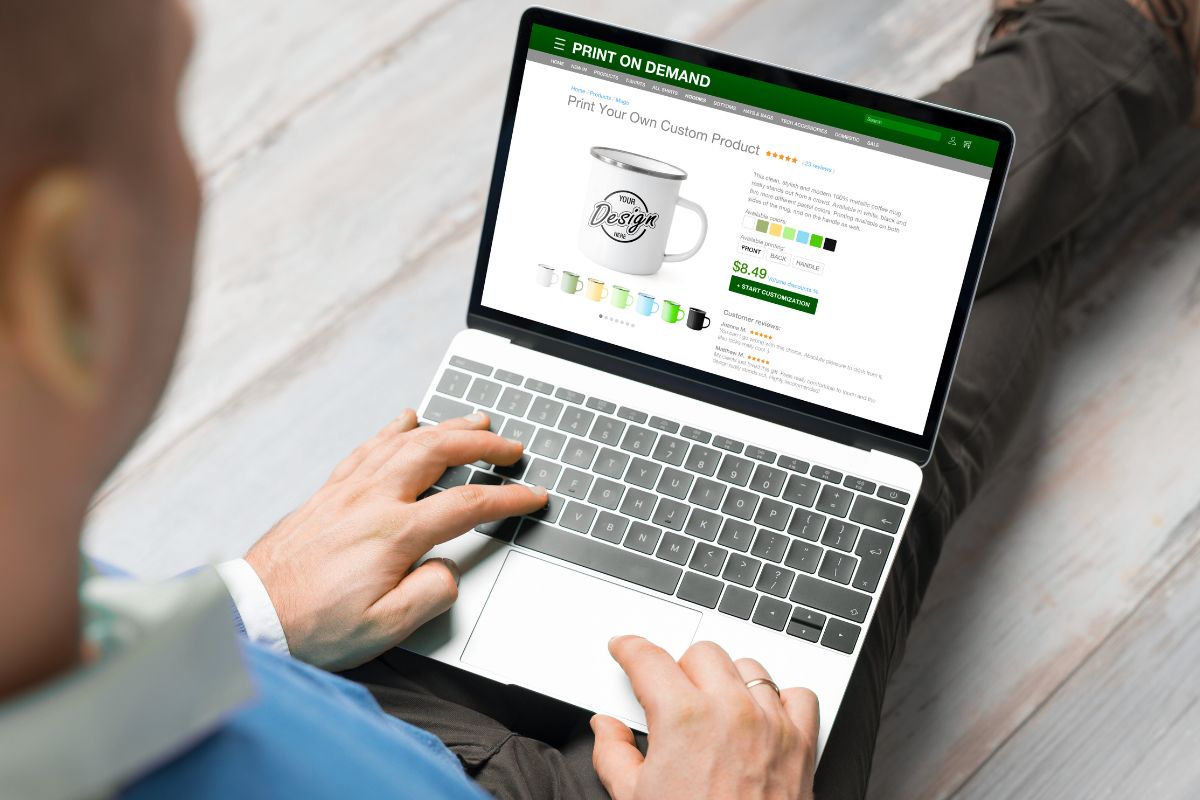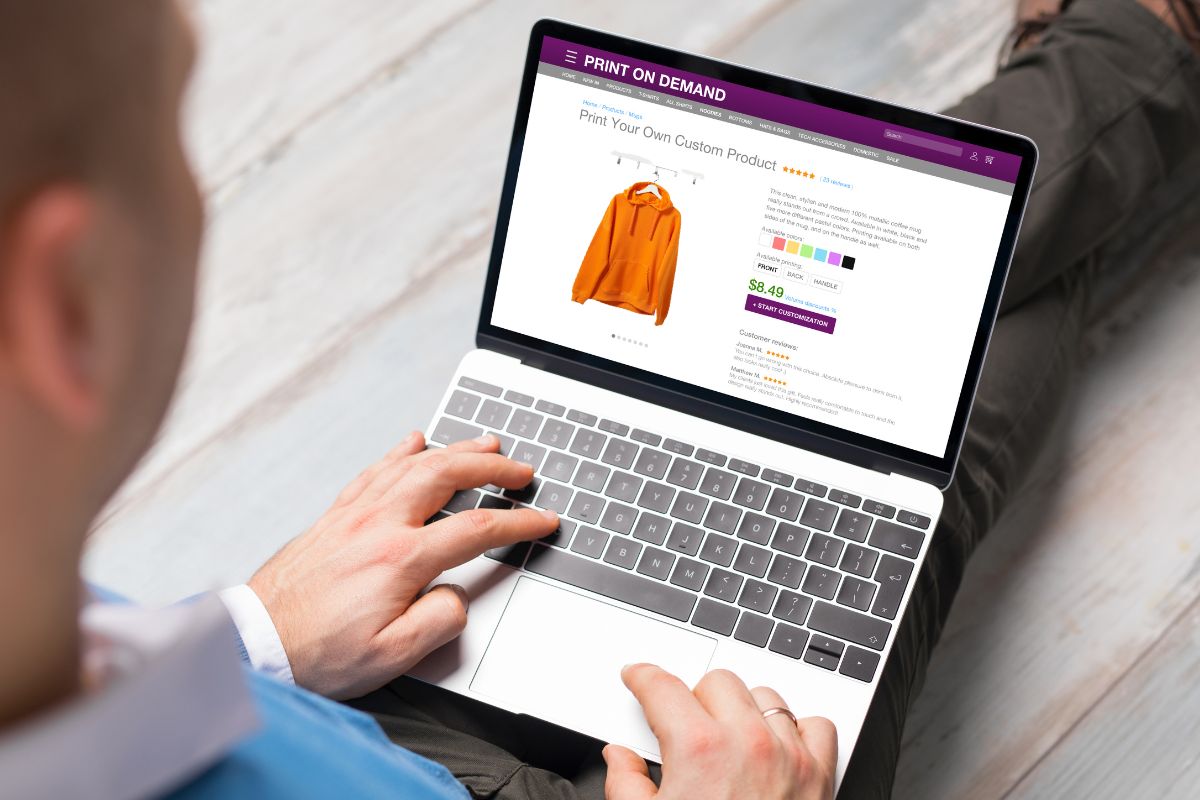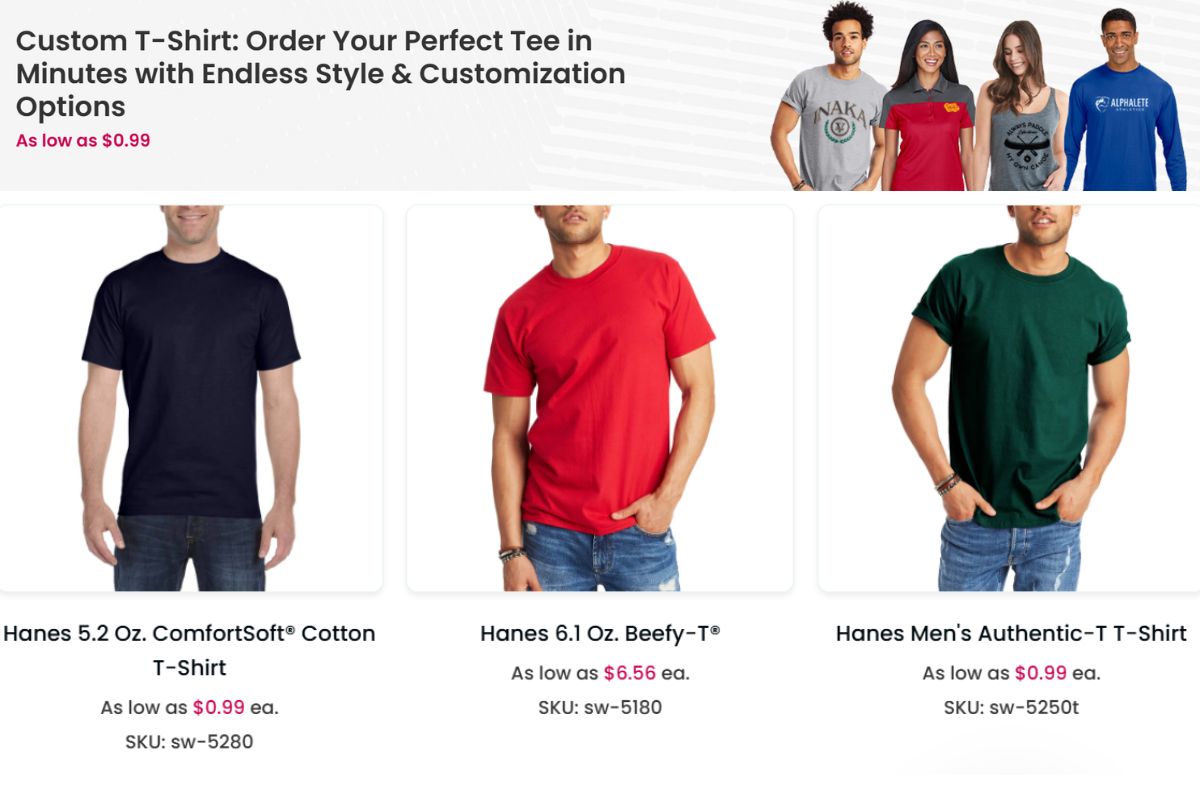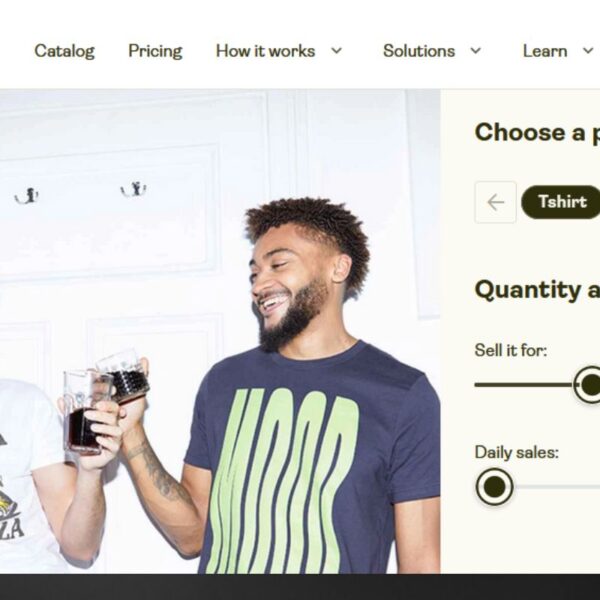As you explore options for starting an online store, you may consider two popular business models: print on demand and dropshipping. Each model has its own strengths, making them appealing for different reasons.
Print on demand allows you to customize products as orders come in, while dropshipping gives you access to a wide variety of existing items from suppliers.
Easily Navigate Our Latest Posts and Resources
- Understanding Print on Demand (POD)
- Understanding Dropshipping
- Product Range and Customization
- Business & Financial Aspects
- Challenges and Quality Control
- Marketing and Brand Building
- Customer Experience and Engagement
- Logistics and Fulfillment Strategies
- Leveraging Technology and Integration
- Market Analysis and Competition
- Planning for Long-Term Success
- Frequently Asked Questions
- What are the key differences between print on demand and dropshipping business models?
- Which incurs lower startup costs, print on demand or traditional dropshipping?
- How does profitability compare between print on demand and dropshipping businesses?
- What are the advantages of using print on demand services over maintaining an inventory?
- Can you achieve a significant income through a print on demand business?
- What factors should beginners consider when choosing between print on demand and dropshipping?
Both methods let you sell without holding inventory, which means less risk and lower upfront costs.
In print on demand, you can put your unique spin on items, helping your brand stand out. Dropshipping, on the other hand, offers flexibility in managing order volume, making it easier to adapt to changing customer demands and trends in ecommerce.
Understanding Print on Demand (POD)
Print on Demand (POD) is a unique business model that enables you to create custom-designed products without holding any inventory. You can offer unique designs and personalized items that align with your brand identity.
This section will cover what POD is, how it operates, and its pros and cons.
Defining POD
Print on Demand is a retail fulfillment method. Here, you sell products that are only printed after a customer places an order. This approach allows for complete customization, meaning each item can be tailored to individual preferences.
You can create a range of products like T-shirts, mugs, and posters without needing to invest in large amounts of stock. This flexibility helps you build a unique catalog while minimizing risks and costs.
How POD Works
POD works by connecting you with a printing service. When a customer places an order on your platform, the printing service receives details. They print the product based on your design and ship it directly to the customer. Here’s a simple breakdown of the process:
- Customer Orders: A customer selects a product and submits their order.
- Order Processing: The order is sent to the POD provider.
- Printing: The POD provider prints the design on the requested product.
- Shipping: The finished product is shipped directly to the customer.
You don’t have to manage any inventory, which cuts down on traditional costs like storage and unsold goods.
Pros and Cons of POD
Pros:
- Customization: You can easily offer personalized designs that cater to trends or buyer interests.
- Low Risk: Since you don’t hold inventory, upfront costs are lower than other models.
- Scalability: As your business grows, you can add more products without large investments.
Cons:
- Production Costs: Since items are printed when ordered, unit costs can be higher than bulk production.
- Quality Control: You depend on the POD supplier for quality. Any mistakes in production can affect your brand’s image.
- Shipping Times: POD products may take longer to reach customers compared to pre-stocked items.
This method allows you to focus on branding and customer experience while minimizing the complexities of inventory management.
Understanding Dropshipping
| Feature | Print-on-Demand (POD) | Dropshipping |
|---|---|---|
| Product Type | Custom-printed apparel, accessories, and home decor | Generic products (electronics, gadgets, fashion, etc.) |
| Customization | High – you can design unique products | Low – you sell pre-made products from suppliers |
| Profit Margins | Lower per item (higher production costs) | Higher margins (bulk purchasing options) |
| Upfront Investment | Low – no need to stock inventory | Low – no inventory costs, but bulk buying can lower costs |
| Shipping Time | Slower – products are made to order (5-10 days) | Faster – ships directly from suppliers (3-7 days, varies) |
| Branding Control | High – unique designs help build a brand | Low – selling the same products as competitors |
| Market Competition | Lower – unique products reduce competition | Higher – many sellers offer the same products |
| Supplier Dependence | High – relies on POD platforms (Printful, Printify, etc.) | High – depends on suppliers (AliExpress, CJ Dropshipping, etc.) |
| Scalability | Moderate – production speed limits scaling | High – can scale quickly with fast-moving products |
| Returns & Refunds | Harder – products are custom-made, limiting returns | Easier – many suppliers accept returns |
| Best For | Artists, designers, influencers, niche brands | General e-commerce businesses, trend-based sellers |
Dropshipping is an attractive option for starting an online business. It allows you to sell products without handling inventory directly. This section covers the definition of dropshipping, how it operates, and its pros and cons.
Defining Dropshipping
Dropshipping is a retail fulfillment method where you sell products without keeping them in stock. Instead, you partner with a third-party supplier who handles inventory and ships products directly to your customers. When a customer orders from your ecommerce store, you forward the order to the supplier. They then pack and ship the item on your behalf.
This method enables you to offer various products without a large upfront investment in inventory.
How Dropshipping Works
In dropshipping, you select products to sell from a dropshipping supplier. Once you set up your online store, you list these products with your pricing. When a customer places an order, they pay you, and you place the same order with your supplier.
The supplier takes care of picking, packing, and shipping. You never touch the product. Shipping costs vary and are typically charged to the customer or deducted from your earnings.
This setup eliminates many risks, but it also means you lack control over shipping times and product quality, which can impact customer satisfaction.
Pros and Cons of Dropshipping
Pros:
- Low Upfront Investment: You don’t need to buy inventory upfront. This makes dropshipping accessible for many.
- Wide Product Selection: You can offer a variety of products without worrying about inventory costs.
- Flexibility: You can adjust your offerings based on trends and customer demand.
Cons:
- Lack of Control Over Shipping: You depend on your supplier for shipping times and quality, which can vary.
- Lower Profit Margins: Because you don’t buy in bulk, costs per product can be higher, reducing your profit potential.
- Competition: Many sellers use the same suppliers, making it hard to differentiate your store.
By considering these factors, you can determine if dropshipping aligns with your business goals.
Product Range and Customization
In the world of e-commerce, understanding product range and customization is vital. You can choose between print on demand (POD) and dropshipping, each offering unique opportunities.
POD Product Customization
With print on demand, the ability to customize products is a major advantage. You can create personalized items that stand out in the market. This allows for unique custom products that reflect your brand’s identity.
POD services often provide free design tools. You can develop your graphics with little to no design skills. Some popular customizable products include:
- Clothing: T-shirts, hoodies, and bags
- Home Decor: Posters and canvas prints
- Accessories: Mugs and phone cases
You have full control over the designs. This increases your chances of reaching specific customer preferences and creating a loyal customer base.
Dropshipping Product Selection
In dropshipping, your product range is vast. You can offer a limitless variety of items without the need to store them physically. This model allows you to cater to multiple interests and trends.
Sellers can choose from many categories, such as:
- Electronics: Gadgets and accessories
- Fashion: Shoes and apparel
- Beauty Products: Skincare and cosmetics
Unlike POD, dropshipping does not focus on customization. Instead, it emphasizes availability and product selection. You can adjust your offerings based on market demand. This flexibility lets you test different products quickly without financial risk.
Business & Financial Aspects
| Aspect | Print-on-Demand (POD) | Dropshipping |
|---|---|---|
| Upfront Investment | Low – No need to buy inventory | Low – No inventory, but bulk buying can reduce costs |
| Product Costs | Higher – Each item is printed individually | Lower – Bulk products have better pricing |
| Profit Margins | Lower – Printing and fulfillment costs reduce margins | Higher – Cheaper sourcing leads to better margins |
| Branding Control | High – Custom designs and private labeling possible | Low – Most suppliers don’t offer branding options |
| Scalability | Moderate – Production time can slow scaling | High – Can scale fast with trending products |
| Advertising Costs | High – Needs brand-building ads for custom products | High – Competitive niches require strong paid marketing |
| Risk Factor | Low – No upfront stock, minimal losses if demand is low | Medium – May face issues with quality, refunds, and stock shortages |
| Payment Processing | Shopify Payments, PayPal, Stripe, etc. | Shopify Payments, PayPal, Stripe, etc. |
| Customer Service | Moderate – Managing print defects and longer shipping times | High – Handling supplier issues, returns, and order fulfillment |
| Returns & Refunds | Harder – Products are custom-made, making returns complex | Easier – Some suppliers allow returns/refunds |
| Cash Flow Management | Needs working capital for ads and slow fulfillment times | Faster cash flow due to quicker fulfillment |
| Long-Term Growth | Strong brand value with unique products | Short-term profitability but harder to build a lasting brand |
When deciding between print on demand and dropshipping, understanding the financial implications is essential. This includes startup costs, ongoing expenses, profit margins, and scalability for your business model.
Startup and Operational Costs
Print on Demand (POD) requires minimal upfront investment. You often pay for products only after you make a sale. This model eliminates the need for inventory, reducing initial costs.
- Typical startup costs include design tools and setting up your online store.
- Operational costs are primarily tied to production and shipping fees.
Dropshipping has similar low startup costs but can vary based on your chosen suppliers.
- You also avoid inventory costs, but you may need to invest in marketing to attract buyers.
- Ongoing costs include supplier fees and any storefront maintenance.
Profit Margins and Scalability
Profit margins in print on demand can be lower compared to dropshipping, primarily due to production costs.
- On average, POD margins can range from 10% to 30%.
- You can increase margins through unique designs or targeting niche markets.
In dropshipping, you can often achieve higher margins, potentially between 15% to 40%.
- This flexibility allows you to adjust prices based on demand and supplier costs.
- Scalability is straightforward for both models. With POD, you can expand product lines easily.
In dropshipping, sourcing new products is effortless. Both models offer potential profitability, but achieving it requires strategic planning and market research.
Challenges and Quality Control

Both print on demand and dropshipping come with unique challenges. Maintaining product quality and ensuring customer satisfaction are key concerns for anyone in e-commerce. Understanding these issues can help you make informed decisions.
Dealing with Challenges
In the print on demand model, challenges often arise from high production costs and reliance on third-party suppliers. You might face issues like long fulfillment times and inconsistent order quality.
For dropshipping, finding reliable suppliers is crucial. This model can lead to challenges with inventory management and delivery times that may vary widely. It’s important to establish strong relationships with suppliers to minimize these issues and improve your service.
There is also high competition in both models. To thrive, you’ll need effective marketing strategies and excellent customer service. Staying ahead requires constant monitoring of the market and adapting to evolving trends.
Ensuring Product Quality
Maintaining product quality is vital for your business. In print on demand, quality is managed by your printing provider. If their standards drop, your customers will notice.
For dropshipping, you rely on the supplier to deliver high-quality products. It’s important to vet your suppliers carefully. Check for reviews and request samples before offering their products to your customers.
To ensure customer satisfaction, you should communicate clearly about delivery times and fulfillment processes. If customers are aware of what to expect, they may be more forgiving of potential delays. Regularly soliciting feedback can also give you insights into product quality and areas for improvement.
Marketing and Brand Building
| Aspect | Print-on-Demand (POD) | Dropshipping |
|---|---|---|
| Brand Identity | Strong – Unique designs make branding easier | Weak – Selling generic products makes it hard to stand out |
| Customization & Uniqueness | High – You create original designs | Low – Selling the same items as competitors |
| Target Audience | Niche-focused – Fans of specific designs, communities, or trends | Broad – General consumers looking for trending products |
| Advertising Strategy | Content marketing, Instagram/TikTok marketing, influencer collaborations | Paid ads (Facebook, Google, TikTok), trending product campaigns |
| SEO & Organic Traffic | Strong potential – Niche branding allows content marketing, blog articles, and SEO growth | Moderate – Competitive landscape makes SEO harder |
| Social Media Strategy | Strong – Shareable custom designs increase engagement | Requires viral marketing and trend-based promotion |
| Email & Retargeting | Effective – Personalized promotions for brand loyalty | Crucial – Retargeting lost visitors due to high competition |
| Influencer & Affiliate Marketing | Works well – Influencers love custom, exclusive products | Can work – Influencers promote trending items, but competition is high |
| Customer Loyalty & Retention | High – Unique brand leads to repeat customers | Low – Generic products mean customers may not return |
| Word-of-Mouth & Virality | High – Unique designs can go viral | Moderate – Trendy products can generate buzz but fade quickly |
Effective marketing and strong brand building are crucial for success in both print on demand (POD) and dropshipping. You need a strategy that resonates with your target audience while differentiating your brand from competitors.
Developing a Marketing Strategy
Creating a marketing strategy starts with identifying your target audience. Understand their preferences and behaviors. Use surveys or social media insights to gather this information.
Next, focus on digital marketing channels. Options like social media, email marketing, and search engine optimization are key. Tailor your messaging to highlight your unique products and brand values.
Budgeting is also important. Allocate resources for promotions, paid ads, and consider using influencer partnerships. This can help expand your reach. Test different approaches and analyze the results to fine-tune your strategy.
Creating Brand Identity through POD
When using print on demand, you can build a unique brand identity. Start with a clear vision of your brand’s values and mission. This will guide your product design and marketing efforts.
Your POD products should reflect your brand identity. Use custom artwork, colors, and designs that resonate with your audience. This personal touch fosters connection and loyalty.
Brand differentiation is important. Identify what makes your brand stand out. Whether it’s eco-friendly materials or unique designs, communicate these aspects clearly to your customers.
Engaging storytelling can enhance your brand connection. Share your journey, values, and behind-the-scenes content. This builds emotional ties and encourages customer loyalty.
Customer Experience and Engagement

In the world of e-commerce, customer experience and engagement are crucial for success.
Understanding what customers want and how to improve their interactions can make a significant difference in satisfaction and loyalty.
Understanding Customer Preferences
To create a positive customer experience, you need to understand preferences.
This involves knowing what customers like, their buying habits, and how they interact with your brand. Surveys and feedback forms can help gather insights about their likes and dislikes.
Consider using tools like email campaigns to ask customers for input. This can increase engagement as customers feel valued.
Pay attention to trends in your sales data to see what products are performing well.
Make sure to segment your audience. Tailored marketing strategies can resonate more with specific groups, leading to a better engagement rate.
By aligning your offerings with customer preferences, you are likely to see increased satisfaction and loyalty.
Enhancing Customer Service
Great customer service is essential in e-commerce. This can turn a one-time buyer into a loyal customer.
Start by ensuring that your support team is well-trained and knowledgeable about your products.
Offer multiple channels for support, such as email, chat, and social media. Customers appreciate having different options to reach you.
Providing quick responses to inquiries enhances their experience.
You can also consider implementing a FAQ section on your website. This allows customers to find answers easily, reducing wait times.
Additionally, follow up on customer orders to keep them informed. This could be through tracking emails or updates about expected delivery times.
Such practices build trust and improve overall satisfaction.
Logistics and Fulfillment Strategies
| Aspect | Print-on-Demand (POD) | Dropshipping |
|---|---|---|
| Order Processing Time | Slower – Products are made-to-order (5-10 days) | Faster – Ships directly from suppliers (1-3 days) |
| Shipping Speed | Moderate to slow – 7-14 days depending on location | Faster – 5-10 days for most products, varies by supplier |
| Shipping Costs | Higher – Printing and fulfillment centers charge fees | Lower – Bulk shipping rates from suppliers |
| Warehousing & Inventory | No inventory needed – Products are created when ordered | No inventory needed – Suppliers handle stock |
| Supplier Dependence | High – Relies on print providers like Printful, Printify | High – Dependent on suppliers (AliExpress, CJ Dropshipping, etc.) |
| Global Shipping | Varies – Some POD providers have global centers | Wide – Dropshipping suppliers often offer worldwide shipping |
| Returns & Refunds | Difficult – Custom-made products usually don’t allow returns | Easier – Some suppliers allow returns, but policies vary |
| Quality Control | Moderate – Depends on POD supplier’s print quality | Low – Quality varies greatly between suppliers |
| Fulfillment Automation | High – POD platforms integrate with Shopify, Etsy, etc. | High – Dropshipping tools (DSers, Spocket) automate orders |
| Risk of Order Delays | High – Production and fulfillment delays can occur | Moderate – Supplier delays, but no production wait time |
Effective logistics and fulfillment are crucial for your business’s success. They directly impact customer satisfaction and operational efficiency.
Understanding how to optimize order fulfillment and manage shipping and returns will help streamline your processes.
Optimizing Order Fulfillment
Order fulfillment involves receiving, processing, and delivering customer orders. For print on demand, products are created after an order is placed, which adds unique challenges. To enhance efficiency, consider these strategies:
- Integrate Technology: Use fulfillment software that automates order routing, tracking, and management. This saves time and minimizes errors.
- Choose Reliable Partners: Collaborate with trusted print-on-demand providers or dropshipping suppliers. Check their production and shipping times for timely deliveries.
- Streamline Processes: Develop clear steps for order processing, from receiving to shipping. Regularly review these workflows to identify areas for improvement.
By focusing on these key aspects, you can enhance your fulfillment method, ensuring customer satisfaction remains high.
Managing Shipping and Returns
Shipping and returns are vital to maintaining customer trust. Fast shipping times and smooth return processes encourage repeat business. Here are strategies to consider:
- Understand Shipping Options: Offer multiple shipping choices, such as standard and express. This allows customers to select based on their needs, balancing cost and speed.
- Set Clear Return Policies: Develop a straightforward return policy. Make sure it includes timelines for refunds and how customers can return products.
- Monitor Shipping Times: Regularly assess shipping performance. Identify delays and work with suppliers to address issues promptly.
By effectively managing these elements, you can create a trustworthy experience for your customers.
Leveraging Technology and Integration

Technology plays a crucial role in maximizing the efficiency of print-on-demand (POD) and dropshipping businesses.
By incorporating various e-commerce platforms and integrations, you can streamline your operations and enhance customer experience. Below are key aspects of leveraging technology for both models.
E-Commerce Platforms and POD
When starting a print-on-demand business, choosing the right e-commerce platform is essential.
Popular platforms like Shopify, WooCommerce, and BigCommerce offer easy setup for your online shop. They provide built-in tools for design and product management.
With these platforms, you can:
- Upload designs easily.
- Manage orders and inventory automatically.
- Track sales in real-time.
Many POD services integrate directly with these platforms. This means when a customer places an order, it is sent automatically to the POD provider for fulfillment. This saves time and reduces errors, allowing you to focus on marketing and expanding your brand.
Integrations for Streamlining Dropshipping
For dropshipping, effective integrations with various apps can optimize your workflow.
Tools like Oberlo and Spocket connect your online business with suppliers, allowing you to manage products effortlessly.
Consider these benefits:
- Automated Product Import: Easily add products to your store from multiple suppliers.
- Inventory Syncing: Keep your product availability updated without manual input.
- Order Fulfillment: Orders are processed directly by your supplier without your involvement.
By utilizing these tools, you can enhance efficiency while reducing the chances of stock issues. Proper integrations provide a seamless experience for both you and your customers, leading to higher satisfaction and loyalty.
Market Analysis and Competition
| Aspect | Print-on-Demand (POD) | Dropshipping |
|---|---|---|
| Market Saturation | Moderate – Niche designs reduce competition | High – Many sellers offer the same trending products |
| Barriers to Entry | Low – Easy to start, but requires strong design skills | Very Low – Anyone can start, leading to high competition |
| Differentiation Potential | High – Unique designs make branding easier | Low – Selling the same products as competitors makes it hard to stand out |
| Target Audience | Niche-focused – Ideal for specific interests (e.g., dog lovers, gamers) | Broad – Depends on trending products and general consumers |
| Competitor Research | Moderate – Need to analyze niche trends and customer preferences | High – Requires constant research on trending products |
| Product Testing & Validation | Moderate – Testing multiple designs can take time | Fast – Can quickly test products and see what sells |
| Advertising Competition | Lower – Niche products reduce ad competition | Higher – Generic products mean more ad competition and higher costs |
| Trend Reliance | Moderate – Some designs have evergreen appeal | High – Needs constant trend-hunting and product testing |
| Scalability | Moderate – Limited by production speed | High – Can scale quickly with trending products |
| Best Market Entry Strategy | Focus on branding, storytelling, and unique designs to attract loyal customers | Find winning products through data analysis, fast testing, and aggressive marketing |
In the world of e-commerce, understanding the market and competition is crucial. You need to identify niche markets and develop strategies to compete in crowded spaces. Here’s how to navigate these important aspects.
Identifying Niche Markets
Finding a niche market can give you a competitive edge. Look for areas with specific interests that are not fully tapped. This could be unique designs, eco-friendly products, or specialized hobbies.
To identify a niche, consider these steps:
- Market Research: Use tools like Google Trends and social media insights to gauge interest.
- Customer Needs: Focus on what your target audience is looking for. Surveys can help understand their preferences.
- Competitor Analysis: Check what competitors offer. Avoid direct competition by filling gaps in their offerings.
By targeting a niche market, you enhance your chances of meeting market demand effectively.
Competing in a Crowded Market
In a crowded market, standing out is essential. Here are key strategies:
- Branding: Develop a strong brand identity. Use consistent colors, logos, and messaging to create recognition.
- Unique Value Proposition: Clearly communicate what sets your products apart. Highlight unique features or benefits.
- Quality Control: Ensure high-quality products to encourage repeat business. Poor quality can harm your reputation.
Remember, competition can be intense. Focus on building customer relationships to foster loyalty and keep customers coming back. By addressing specific needs and maintaining quality, you can carve out your space even among many competitors.
Planning for Long-Term Success
When planning for long-term success, it is crucial to set clear business goals and metrics. Additionally, ensuring operational efficiency will help streamline your processes and improve profitability. Both aspects are vital for sustained growth in your chosen model.
Setting Business Goals and Metrics
You should start by defining specific goals that align with your vision.
Consider objectives related to sales, customer satisfaction, and brand recognition. Use the SMART criteria: goals should be Specific, Measurable, Achievable, Relevant, and Time-bound.
Examples of Goals:
- Increase sales by 20% in the next year.
- Achieve a customer satisfaction rating of 90% or higher.
Once you have set your goals, develop metrics to track progress. Use tools like spreadsheets to monitor sales data, customer feedback, and marketing effectiveness.
Regularly review these metrics to adjust your strategy and stay on course.
Ensuring Operational Efficiency
To maximize profitability, focus on streamlining operations.
Evaluate your supply chain, especially if you choose dropshipping or print-on-demand.
Steps to Improve Efficiency:
- Automate routine tasks, such as order processing and customer communication.
- Use reliable suppliers to minimize delays and errors.
- Optimize your website for user experience, making it easy for customers to purchase.
Regularly assess your operational processes. Look for areas where you can cut costs without sacrificing quality.
This approach not only enhances profitability but also improves the ease of operation, leading to better customer experiences.
Frequently Asked Questions
Here are some common questions people have about print on demand and dropshipping. Understanding these can help you make informed decisions about which model suits your business goals.
What are the key differences between print on demand and dropshipping business models?
The main difference is how products are handled. Print on demand creates custom products as orders come in. In contrast, dropshipping sells existing products directly from suppliers without customization. This affects inventory management and product variety.
Which incurs lower startup costs, print on demand or traditional dropshipping?
Traditional dropshipping usually has lower startup costs. You do not need to purchase inventory upfront. Print on demand may require some investment in design and product setup, but you only pay when you receive orders.
How does profitability compare between print on demand and dropshipping businesses?
Profitability can vary based on your approach. Dropshipping often has lower margins because you’re selling products at a price set by suppliers. Print on demand allows for higher markups on custom-designed products, which can lead to better profitability if you manage costs well.
What are the advantages of using print on demand services over maintaining an inventory?
Using print on demand means you avoid the costs and risks of holding inventory. You can offer a wider variety of unique products without upfront investment and manage your cash flow better since you only pay for items that sell.
Can you achieve a significant income through a print on demand business?
Yes, it is possible to earn a significant income with print on demand.
Success depends on the quality of your designs, marketing, and the ability to reach your target audience. Many successful entrepreneurs have built profitable businesses in this space.
What factors should beginners consider when choosing between print on demand and dropshipping?
Beginners should think about product types, market demand, and their personal skills.
If you have design talent and want to create unique products, print on demand might be better.
If you prefer a wider range of products without involving design, dropshipping could be the way to go.




